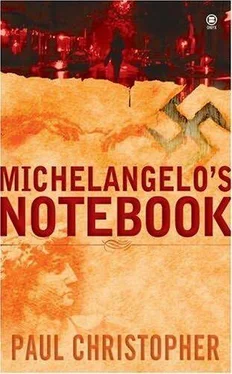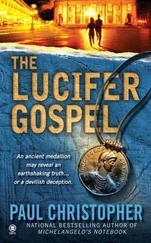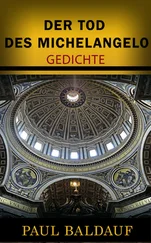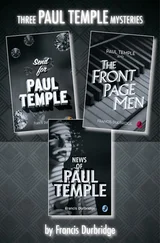Paul Christopher - Michelangelo_s Notebook
Здесь есть возможность читать онлайн «Paul Christopher - Michelangelo_s Notebook» весь текст электронной книги совершенно бесплатно (целиком полную версию без сокращений). В некоторых случаях можно слушать аудио, скачать через торрент в формате fb2 и присутствует краткое содержание. Жанр: Триллер, на английском языке. Описание произведения, (предисловие) а так же отзывы посетителей доступны на портале библиотеки ЛибКат.
- Название:Michelangelo_s Notebook
- Автор:
- Жанр:
- Год:неизвестен
- ISBN:нет данных
- Рейтинг книги:5 / 5. Голосов: 1
-
Избранное:Добавить в избранное
- Отзывы:
-
Ваша оценка:
- 100
- 1
- 2
- 3
- 4
- 5
Michelangelo_s Notebook: краткое содержание, описание и аннотация
Предлагаем к чтению аннотацию, описание, краткое содержание или предисловие (зависит от того, что написал сам автор книги «Michelangelo_s Notebook»). Если вы не нашли необходимую информацию о книге — напишите в комментариях, мы постараемся отыскать её.
Michelangelo_s Notebook — читать онлайн бесплатно полную книгу (весь текст) целиком
Ниже представлен текст книги, разбитый по страницам. Система сохранения места последней прочитанной страницы, позволяет с удобством читать онлайн бесплатно книгу «Michelangelo_s Notebook», без необходимости каждый раз заново искать на чём Вы остановились. Поставьте закладку, и сможете в любой момент перейти на страницу, на которой закончили чтение.
Интервал:
Закладка:
“That doesn’t make any sense,” said Kornitzer. “He kills your boyfriend, but he hires someone to kill you-that Asian kid on the bicycle you mentioned?”
“It would make sense if there was more than one killer,” Valentine said slowly.
“I deal in hard-line mathematics. That just doesn’t compute.”
“Of course it doesn’t, not mathematically, but I’ve seen enough killing to know that like attracts like,” said Valentine. “What if Finn is right? What if Killer Number One has been murdering people long before Crawley. We’ve had four deaths so far, four murders-Crawley, Finn’s boyfriend, Peter, Gatty, and Kressman in Alabama, all connected by art-looted art. The death of Finn’s boyfriend is like shooting up a flare, a signal that something’s out of kilter, the killer making himself known. That brings on Killer Number Two, who tries to cover things up by dealing with Gatty and Kressman, probably to shut them up. If this all goes back to that shipment, or maybe something even worse, there’s a lot at stake. Certainly enough motive to kill for.”
“Nice hypothesis but I’m not buying it,” said Kornitzer, shaking his head. “Too much coincidence.”
“Is there any way we can find out if other people on that list of names died unnaturally?” Finn asked.
Kornitzer lifted his shoulders. “I could probably figure out a way to do it. Take me more than half an hour though.”
“Start figuring it out,” said Valentine. “We’re running out of time.”
43
Woodside, still occasionally called Suicide’s Paradise for its wealth of third rails and speeding subway trains, is a New York neighborhood wedged between two cemeteries in northern Queens-St. Michael’s to the north and Calvary Cemetery to the south. La Guardia Airport is only a mile from the neighborhood’s northern edge and the entire area is crisscrossed by elevated commuter and subway lines. Once predominantly Irish Catholic, it now has an astoundingly diverse population of Koreans, South Asians, Mexicans, Dominicans and Ecuadorians. There are pubs everywhere, the majority still selling quantities of Cork Dry Gin, Jameson’s, Guinness and Harp in the broad flat accents of Derry, Dublin and Donegal.
The priest drove his rental car into Queens and eventually found St. Sebastian’s, a huge, windowless tomb of yellowing brick in the dour basilica style of County Cork churches. The deacon there, a man named Wibberley who’d volunteered there for so long he thought he owned the place, took the man from Rome through the old records. Neither they nor his own memory could recall anything of Frederico Botte or his adoptive parents, Sergeant and Mrs. Thorpe. Young Freddie had not been an altar boy, communicant or even a member of the church’s famous basketball team. The only place Wibberley could think of that might know more was the funeral home a few blocks south along 58th Street, a Woodside institution since the early 1900s, when the area was still virtually rural.
The funeral home had indeed buried a Mr. Brian Thorpe on March 18, 1963. A few questions and lunch in an Irish greasy spoon called the Stop Inn Diner by the Long Island Rail Road elevated tracks on Roosevelt Avenue sent him to Sunnyside and the archives of the Woodside Herald, a Queens community newspaper that had been in operation since the second world war. According to the microfilmed copies of the paper for the week of March 20, 1963, Brian Thorpe, a member of the American Legion, a decorated veteran and the owner of the D and D hardware store, was accosted and killed on his way home from a late night at Donovan’s on Roosevelt Avenue. The police report stated that he was stabbed repeatedly. No weapon was found at the scene. He was survived by his wife Annalise and his son Frederick. An address for his wife was listed on Woodside Avenue.
He checked the Queens phone book but there was nothing for Anna or Annalise Thorpe. With no alternative he drove back into the neighborhood and discovered that the address in the Woodside Herald was for an apartment above the Chez Diamond Styling Hair Salon. The name on the scarred, grimy door was for A. Kurovsky. Finally, the circle closed: Annalise Kurovsky, the woman who had taken Frederico Botte out of Germany and to the United States on the Batory, married a man who had been murdered-stabbed, like all the others. He rang the doorbell. Almost immediately there was an answering buzz, as though he had been expected. He pushed his way through the door and went up the long, dark flight of stairs to the apartment above.
Whatever she had been before, Annalise Kurovsky had become a very dry stick. In her eighties her flesh had shrunk in on itself until it was no more than a wrinkled parchment shroud for ancient bone and sinew. Her face was sagged and wattled, marked in places by sun blotches and reddened areas. Out of it all burned a pair of dark, angry eyes, glaring with intelligence and some deep bitterness. The road she had traveled to find herself above a hair salon in Queens had clearly been a long and very difficult one.
The woman’s living room was dark and cluttered. A row of mismatched bookcases stood against one wall, crammed with knickknacks and photographs. More photos hung on the stippled plaster walls along with decorative plates and several official-looking plaques. In the middle of it all, bizarrely, was an oil painting over the mantel of a gas fireplace. The painting, large and ornately framed, showed a young Mary stooping over a cradle holding the infant Christ while several angels watched from the upper left corner. The painting, and the artist who painted it, were instantly recognizable.
“Do you know what that is?” the priest asked.
“Certainly,” the woman snapped, her voice as dry as her thin skin. “It is a Rembrandt. A study for the Holy Family, painted in 1645. The fully realized painting hangs in the Hermitage Museum in St. Petersburg.”
“Where did you get it?”
“My husband gave it to me.”
“Where did he get it?”
“I can’t see that it is any of your business.”
“No, perhaps not.”
“You didn’t come to speak to me of paintings anyway. You came to ask me about my son Frederico, yes?”
“Perhaps.”
“Don’t be coy.” The old woman smiled. She sat down on a worn couch under the window. The priest chose a seat where he could see the startling presence of the Rembrandt.
“Yes, I came about the boy.”
“I have been expecting you for a long time.”
“Expecting me?”
“Of course. With all this talk of making Pacelli a saint.”
“You know a great deal.”
“I know everything,” said the woman. “The whole story. It is a story that must be told, and I am the one to tell it.”
“The priest smiled. “Not you, and not now.”
“Who will stop me?” she asked, her voice snapping like twigs. “I have a duty to my son!”
“I will stop you,” said the priest quietly. “And your duty is done.”
The man from Rome had thought about using his gun but instead he rose to his feet, went around the cluttered coffee table that separated them, then leaned down, driving the palm of his hand under her chin, snapping her head back and breaking her withered neck. He let her fall face forward, breaking her nose on the coffee table. He checked her carotid pulse, found nothing and began to search the apartment.
44
Finn Ryan sat on the bench directly across from 11 St. Luke’s Place in Greenwich Village and decided that Michael had been right: knocking on the Grange Foundation’s door to get a better idea of what they were dealing with was really stupid. Not only that, it was potentially dangerous, maybe even fatally so. On the other hand, Barrie Kornitzer’s MAGIC program could take them only so far. In fact it was MAGIC’s limitations that made places like Ex Libris so important: in the end, the Internet was nothing more than a seething, almost infinite cauldron of half truths, opinions, outright lies and lunacy. It wasn’t the Wild West of communications and information gathering; it was the twilight zone. Sometimes-and, in fact, more often than not-you had to go to the source.
Читать дальшеИнтервал:
Закладка:
Похожие книги на «Michelangelo_s Notebook»
Представляем Вашему вниманию похожие книги на «Michelangelo_s Notebook» списком для выбора. Мы отобрали схожую по названию и смыслу литературу в надежде предоставить читателям больше вариантов отыскать новые, интересные, ещё непрочитанные произведения.
Обсуждение, отзывы о книге «Michelangelo_s Notebook» и просто собственные мнения читателей. Оставьте ваши комментарии, напишите, что Вы думаете о произведении, его смысле или главных героях. Укажите что конкретно понравилось, а что нет, и почему Вы так считаете.











